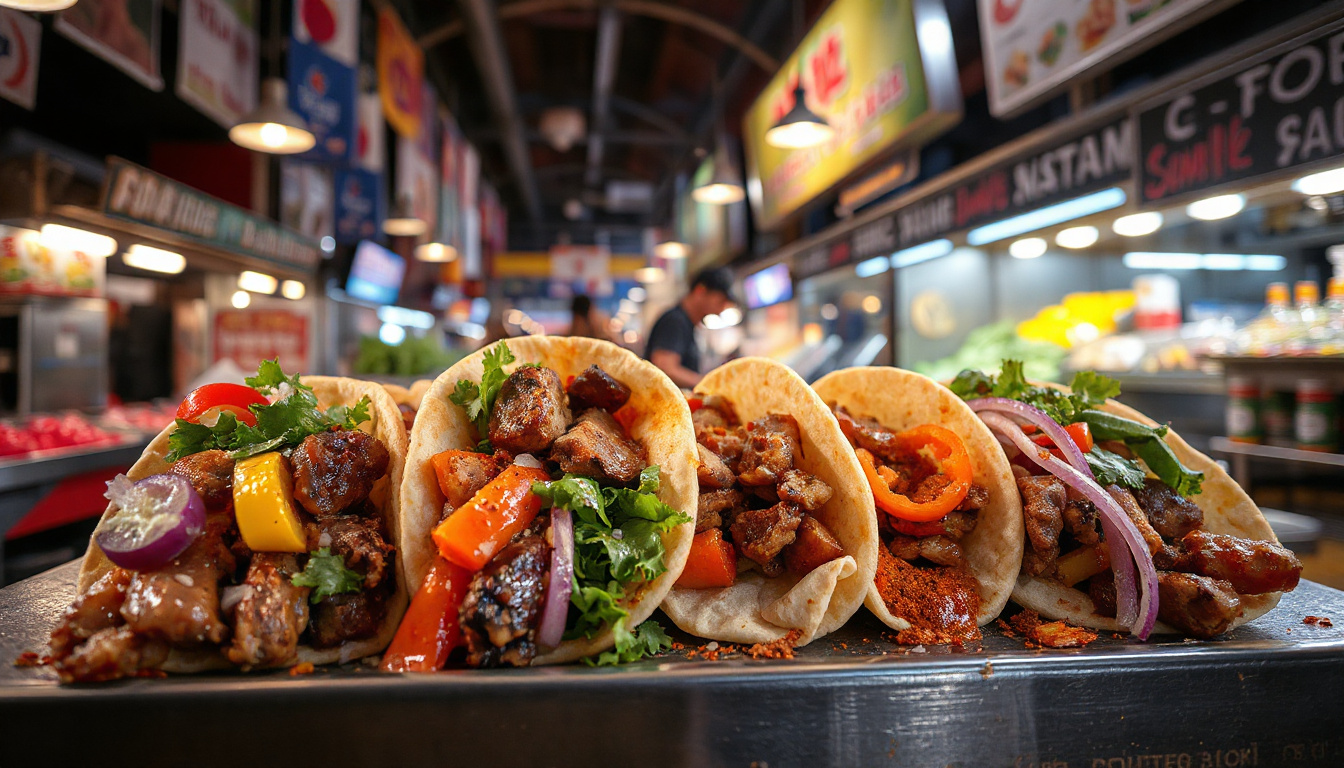Shawarma has taken the culinary world by storm, captivating taste buds with its rich flavors and enticing aroma.
This Middle Eastern dish, often found in bustling street stalls and upscale restaurants alike, brings a unique blend of spices and textures that leaves every food lover wanting more.
But what exactly makes shawarma so irresistible?
In this article, we journey through the origins of shawarma, explore its key ingredients, and dive into delicious variations from around the globe.
Plus, we’ll share tips on creating authentic shawarma at home and suggest the best pairings for an unforgettable dining experience.
Get ready to savor the flavor!
 Egypt: Egyptian shawarma is distinctive, often seasoned with a blend of spices unique to the region and served with tahini sauce.
Egypt: Egyptian shawarma is distinctive, often seasoned with a blend of spices unique to the region and served with tahini sauce.
As shawarma traversed from the streets of Istanbul to the bustling markets of Beirut, its preparation and presentation adapted to local tastes, but the essence—a combination of savory meat and spices—remained integral to its appeal.
### A Global Phenomenon
Fast forward to today, and shawarma has transcended its humble origins to become a global sensation.
Cities worldwide boast gourmet shawarma restaurants, each adding an innovative spin to this traditional fare.
Its adaptability, convenience, and incredible flavor make shawarma a favorite not only among locals but also among food lovers everywhere.
In conclusion, shawarma’s journey from its Ottoman roots to its status as a global delicacy illustrates the dynamic nature of culinary traditions.
It’s not just a meal; it’s a testament to cultural exchange and the evolution of taste.
Whether you’re grabbing a quick bite on the streets of Cairo or savoring gourmet shawarma in New York City, understanding its origins enriches the experience, turning every bite into a delicious slice of history.
Ingredients that Make Shawarma Irresistible
# Ingredients that Make Shawarma Irresistible
Shawarma is more than just a delicious street food; it’s a flavor-packed experience that resonates with taste buds around the globe.
The secret behind its irresistible taste lies in a combination of high-quality ingredients and authentic preparation methods.
Let’s dive deeper into what makes shawarma a must-try delicacy.
##
1.
The Meat
One of the most critical components of shawarma is the meat, typically lamb, chicken, beef, or turkey.
The choice of meat not only influences the flavor but also provides a base for marination.
For example, tender chicken marinated in a blend of spices infuses the shawarma with moisture and depth of flavor.
• Lamb: Offers a rich, juicy flavor that is often paired with traditional spices.
– Chicken: A versatile option that absorbs marinades well, making it a popular choice.
– Beef: Gives a hearty bite and pairs well with robust seasonings.
##
2.
Marinade Mastery
Shawarma is famous for its unforgettable marinade which typically includes:
• Garlic: Adds a pungent kick and enhances savory notes.
– Yogurt: Tenderizes the meat while contributing a creamy texture.
– Spices: Common spices include cumin, paprika, turmeric, and coriander, each adding unique notes that elevate the overall flavor profile.
This marinade not only penetrates the protein but also creates that signature shawarma flavor that keeps people coming back for more.
##
3.
Fresh Vegetables
Complementing the rich meat is the inclusion of fresh vegetables, which add crunch and freshness to each bite.
Key veggies typically used in shawarma include:
• Tomatoes: Juicy and refreshing, they form a great base layer.
– Cucumbers: Provide a crisp contrast to the tenderness of the meat.
– Onions: Often pickled, they add a zesty flavor that cuts through the richness of the shawarma.
##
4.
Delicious Sauces
No shawarma is complete without its sauces, which bring everything together.
Two fan-favorite options are:
• Tahini Sauce: A creamy sesame-based sauce that adds a nutty depth.
– Garlic Sauce (Toum): A fluffy, potent garlic sauce that elevates the flavor experience.
## Conclusion
In summary, the ingredients that make shawarma irresistible are a thoughtful combination of high-quality meat, masterful marinades, fresh vegetables, and delicious sauces.
Each element plays a vital role in creating a dish that is both satisfying and memorable.
So, whether you’re preparing shawarma at home or indulging in it from your favorite local eatery, be sure to appreciate the intricacies that make this dish a beloved favorite worldwide.
‘Food is not about impressing people. It’s about making them feel comfortable.’ – Ina Garten
 October 2025
October 2025

